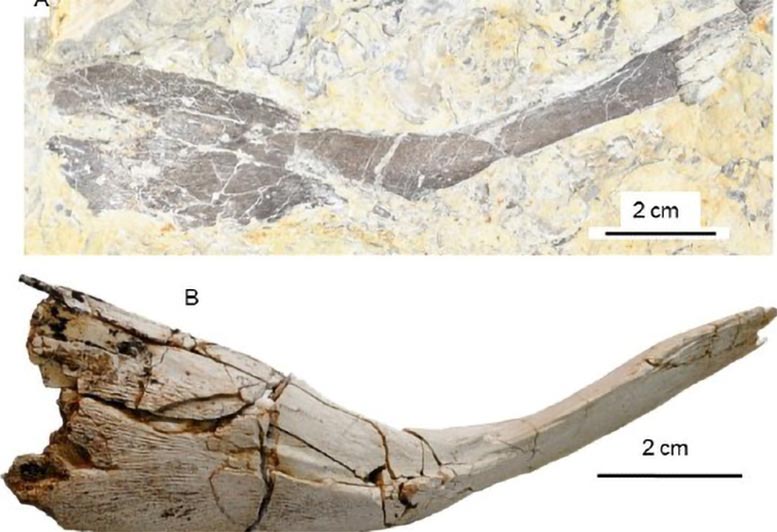Researchers discovered dozens of Triassic coelacanth fossils in UK museums. The fish were once mistaken for reptile bones.
The coelacanth is often called a “living fossil.” Once believed to have vanished millions of years ago, it was unexpectedly rediscovered in 1938 when one was caught in the Indian Ocean.
Since then, several more specimens have been documented, yet their fossil record has remained incomplete. In a recent study, Jacob Quinn and his collaborators from the University of Bristol and the University of Uruguay uncovered coelacanth fossils in museum collections that had gone unnoticed for over 150 years.
Fossils from the Triassic seas
The newly identified specimens date to the closing stages of the Triassic Period, around 200 million years ago, when the region that is now the UK was positioned in more tropical latitudes.
“During his Master’s in Palaeobiology at Bristol, Jacob realised that many fossils previously assigned to the small marine reptile Pachystropheus actually came from coelacanth fishes,” said Professor Mike Benton, one of Jacob’s supervisors. “Many of the Pachystropheus and coelacanth fossils have uncanny similarities, but importantly, Jacob then went off to look at collections around the country, and he found the same mistake had been made many times.”

“It is remarkable that some of these specimens had been sat in museum storage facilities, and even on public display, since the late 1800s, and have seemingly been disregarded or identified as bones of lizards, mammals, and everything in-between,” said Jacob. He continued “from just four previous reports of coelacanths from the British Triassic, we now have over fifty.”
Jacob made X-ray scans of many specimens to confirm the identifications. The specimens mostly belong to an extinct group of coelacanths, the Mawsoniidae, but are closely related to the living fish.
Insights into ancient ecosystems
Co-author Pablo Toriño, a world expert on coelacanths, located in Uruguay, added, “Although the material we identify occurs as isolated specimens, we can see that they come from individuals of varying ages, sizes, and species, some of them up to one metre long, and suggesting a complex community at the time.”
“The coelacanth fossils all come from the area of Bristol and Mendip Hills, which in the Triassic was an archipelago of small islands in a shallow tropical sea,” said co-supervisor Dr David Whiteside. “Like modern-day coelacanths, these large fishes were likely opportunistic predators, lurking around the seafloor and eating anything they encountered, probably including these small Pachystropheus marine reptiles, which is ironic given their fossils have been confused with those of coelacanths for decades.”
Reference: “Coelacanthiform fishes of the British Rhaetian” by Jacob G. Quinn, David I. Whiteside, Pablo Toriño, Evangelos R. Matheau-Raven and Michael J. Benton, 7 September 2025, Journal of Vertebrate Paleontology.
DOI:10.1080/02724634.2025.2520921
Never miss a breakthrough: Join the SciTechDaily newsletter.

